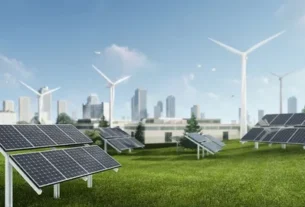Introduction
SO here we are going to discuss all emerging technologies that are going to lead the world in near future.
For reading about More technologies you can also visit The Pure Technology website that is Betterthistechs.com .
1. Spin Launch: Revolutionizing Satellite Deployment
Spin Launch, a lesser-known company, is pioneering a kinetic energy launch system to make satellite deployment cheaper, greener, and more accessible. By utilizing a vacuum-sealed centrifuge, they aim to launch satellites into orbit at speeds up to 5000 miles per hour, significantly reducing fuel consumption and environmental impact.
2. Graphene: The Wonder Material of the Future
Graphene, a two-dimensional material derived from graphite, promises extraordinary properties such as exceptional strength, transparency, and conductivity. With applications ranging from electronics to composite materials, graphene is poised to revolutionize various industries.
3. GPS 3: Enhancing Global Navigation
The GPS 3 project by Lockheed Martin seeks to upgrade the existing GPS satellite network, providing more precise signals with improved coverage and resistance to signal interference. These advancements will have significant implications for navigation systems and location-based technologies.
4. Floating Farms: Sustainable Food Production
Floating farms offer a novel solution to the challenge of feeding a growing population while minimizing land use and environmental impact. By leveraging unused ocean surfaces, these farms provide opportunities for efficient and sustainable food production, even in disaster-affected regions.
5. Edge Computing: Bringing Processing Closer to Users
Edge computing decentralizes data processing by moving it closer to the point of use, reducing latency and improving efficiency. This approach enhances privacy, security, and overall user experience, particularly in applications like facial recognition and autonomous vehicles.
6. Self-Healing Concrete: Transforming Infrastructure
Self-healing concrete integrates bacteria and a food source into the concrete mix, enabling it to repair cracks autonomously. This innovation promises to extend the lifespan of infrastructure while reducing maintenance costs and enhancing safety.
7. Hydrogen Fuel Cells: Clean Energy Solutions
Hydrogen fuel cells offer a promising alternative to fossil fuels in various transportation sectors, including trains, aircraft, and automobiles. With zero emissions aside from water vapor, hydrogen fuel presents a sustainable energy solution for a greener future.
8. Satellite Constellations: Expanding Global Connectivity
Tech giants like SpaceX, Boeing, and Amazon are launching satellite constellations to provide global internet coverage. These constellations, comprising thousands of satellites, have the potential to bridge the digital divide and enable connectivity in remote areas.
9. GPT-3: Advancing Natural Language Processing
GPT-3, developed by OpenAI, is a language prediction model capable of generating human-like text. With applications in content generation, virtual assistants, and more, GPT-3 is poised to revolutionize human-computer interaction.
10. Connected Homes: Automating Everyday Life
The proliferation of smart devices and the Internet of Things is transforming traditional homes into connected ecosystems. From automated appliances to voice-controlled systems, connected homes offer convenience, efficiency, and enhanced quality of life.
11. Lithium Metal Batteries: Powering the Electric Revolution
Lithium metal batteries, with their solid-state design, promise higher energy density and faster charging compared to traditional lithium-ion batteries. These advancements are crucial for accelerating the transition to electric vehicles and renewable energy storage.
12. 3D Printing: Redefining Manufacturing
3D printing technology is revolutionizing manufacturing by enabling rapid prototyping, customization, and on-demand production. From aerospace components to medical devices, 3D printing offers unparalleled versatility and efficiency.
13. Blockchain: Beyond Cryptocurrency
Blockchain technology, beyond powering cryptocurrencies, has diverse applications in supply chain management, digital identity verification, and decentralized finance. Its immutable and transparent nature ensures trust and security in various transactions.
14. Fighting Fire with Sound: Innovative Fire Suppression
Acoustic extinguishers utilize sound waves to extinguish fires by disrupting the oxygen supply. This groundbreaking technology offers a safer, more environmentally friendly alternative to traditional firefighting methods.
15. Quantum Computing: Unlocking Unprecedented Computing Power
Quantum computing, leveraging the principles of quantum mechanics, promises exponentially faster computation for solving complex problems. With applications in optimization, cryptography, and drug discovery, quantum computing heralds a new era of technological advancement.
Conclusion
Emerging technologies are reshaping our world at an unprecedented pace, offering solutions to pressing challenges and unlocking new possibilities. From sustainable energy to advanced computing, these innovations hold the key to a brighter future, driving progress and transforming industries.you can read more betterthistechs articles for more technology read
FAQs
1. What is graphene, and why is it considered revolutionary?
Graphene is a two-dimensional material with remarkable properties, including strength, transparency, and conductivity. Its potential applications span various industries, from electronics to aerospace, making it a highly sought-after material for future technologies.
2. How does self-healing concrete work, and what are its benefits?
Self-healing concrete contains bacteria and a food source that can repair cracks autonomously when exposed to water and oxygen. This innovation extends the lifespan of infrastructure, reduces maintenance costs, and enhances safety by preventing structural deterioration.
3. What role do satellite constellations play in global connectivity?
Satellite constellations, comprising thousands of satellites, aim to provide global internet coverage, bridging the digital divide and enabling connectivity in remote regions. Companies like SpaceX and Amazon are leading the effort to expand access to high-speed internet worldwide.
4. How does quantum computing differ from classical computing?
uantum computing utilizes qubits, which can exist in multiple states simultaneously, allowing for exponentially faster computation compared to classical computers. This technology holds immense potential for solving complex problems in various fields, from cryptography to drug discovery.




